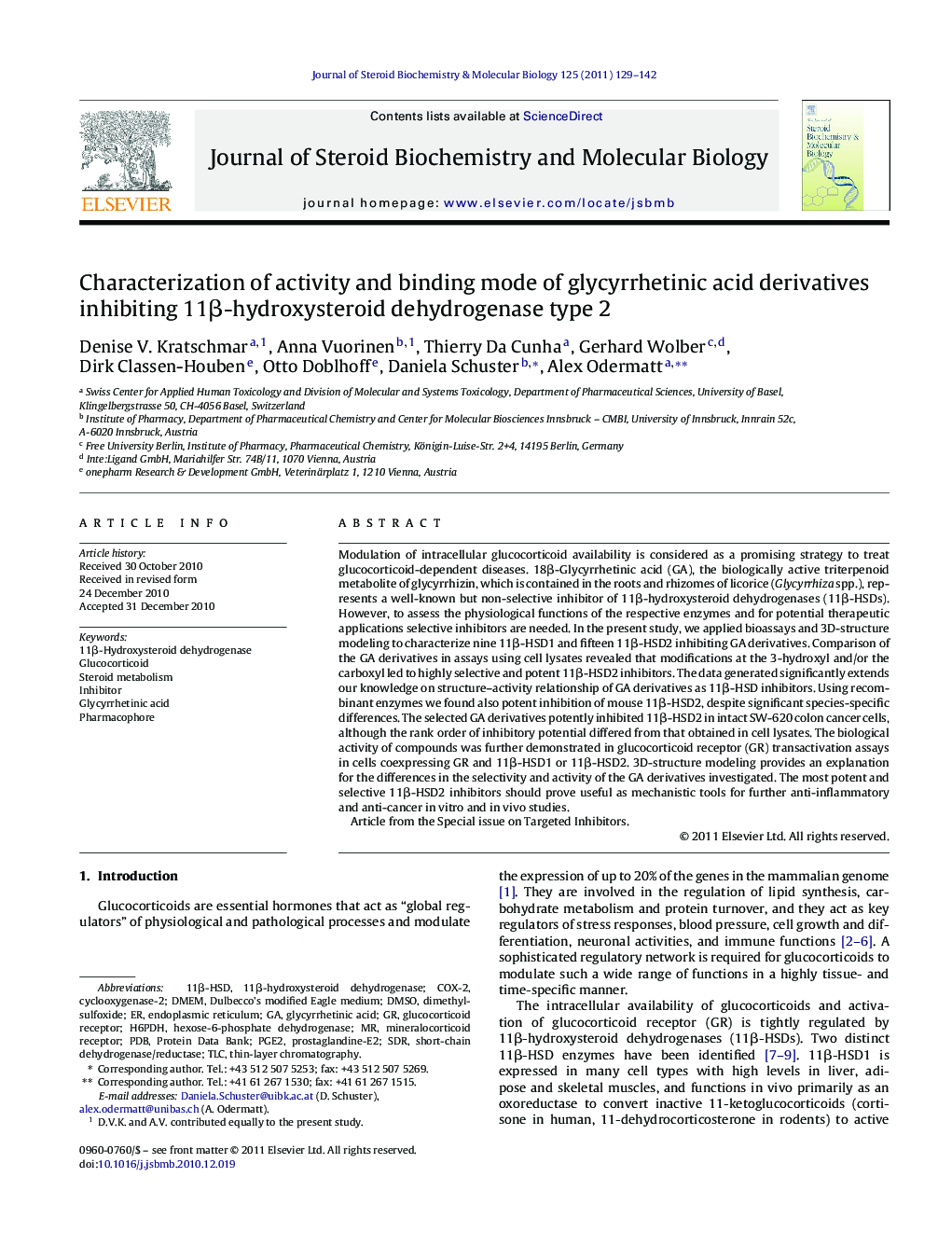| Article ID | Journal | Published Year | Pages | File Type |
|---|---|---|---|---|
| 1992061 | The Journal of Steroid Biochemistry and Molecular Biology | 2011 | 14 Pages |
Modulation of intracellular glucocorticoid availability is considered as a promising strategy to treat glucocorticoid-dependent diseases. 18β-Glycyrrhetinic acid (GA), the biologically active triterpenoid metabolite of glycyrrhizin, which is contained in the roots and rhizomes of licorice (Glycyrrhiza spp.), represents a well-known but non-selective inhibitor of 11β-hydroxysteroid dehydrogenases (11β-HSDs). However, to assess the physiological functions of the respective enzymes and for potential therapeutic applications selective inhibitors are needed. In the present study, we applied bioassays and 3D-structure modeling to characterize nine 11β-HSD1 and fifteen 11β-HSD2 inhibiting GA derivatives. Comparison of the GA derivatives in assays using cell lysates revealed that modifications at the 3-hydroxyl and/or the carboxyl led to highly selective and potent 11β-HSD2 inhibitors. The data generated significantly extends our knowledge on structure–activity relationship of GA derivatives as 11β-HSD inhibitors. Using recombinant enzymes we found also potent inhibition of mouse 11β-HSD2, despite significant species-specific differences. The selected GA derivatives potently inhibited 11β-HSD2 in intact SW-620 colon cancer cells, although the rank order of inhibitory potential differed from that obtained in cell lysates. The biological activity of compounds was further demonstrated in glucocorticoid receptor (GR) transactivation assays in cells coexpressing GR and 11β-HSD1 or 11β-HSD2. 3D-structure modeling provides an explanation for the differences in the selectivity and activity of the GA derivatives investigated. The most potent and selective 11β-HSD2 inhibitors should prove useful as mechanistic tools for further anti-inflammatory and anti-cancer in vitro and in vivo studies.Article from the Special issue on Targeted Inhibitors.
Research highlights► Modifications at the 3-hydroxyl and carboxyl of glycyrrhetinic acid yielded selective 11β-HSD2 inhibitors. ► The glycyrrhetinic acid derivatives potently inhibited 11β-HSD2 in intact SW-620 colon cancer cells. ► The biological activity was demonstrated in GR transactivation assays. ► 3D-structure modeling of 11β-HSD1 and 2 explains compound selectivity. ► The inhibitors may be used as tools to study 11β-HSD2 function.
